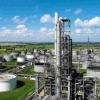Dear all,
I am new here. I have just started to work for a company that design and build Organc Rankine Cycle. I am involved in PSV design for heat exchanger protection. I am trying to figure out how to calculate the needed mass flow to be discharge from a PSV in case of abnormal process heat input.
In shell side I have a hydrocarbon mixture;
in tube side hot steam+NCG (170°C)
In case of steam side stop valve fault which will be the flow rate that I have to discharge? It will simply be heat input from steam divided by latent heat of hydrocarbon at shell side design pressure?
Is there others method of calculation? Because in this way we calculate a big PSV....
Thanks in advance for your valuable help and sorry for my bad english...
Simone

 FB
FB













